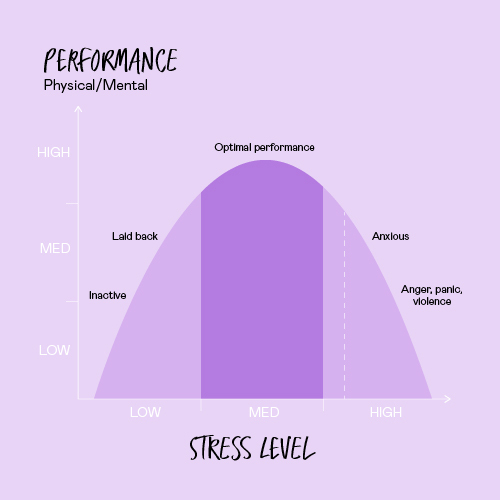In this guided exercise, we’ll talk you through the three parts: focusing on your breathing, scanning your body for tension, and relaxing your body parts by emphasizing sensations of warmth and heaviness.
It’s hard to learn any new skill when the pressure is on, so we want you to start by practicing this when you’re not in the middle of a stressful situation.
Before you give this a try right now, check in with yourself: How are you feeling? Make sure you’re sitting comfortably and then listen to the audio file below. We’ll talk you through it.
CBT Lesson
Relaxation 101
Why This Works
The scientific evidence is clear: The best way to treat depressive or anxious symptoms and improve your overall mental health is to combine medication with your own lifestyle behavior changes.
Stress is a common factor in depressive and anxious symptoms, and for many of us, it can impact our day-to-day lives tremendously. Did you know that a stress response is wired into us biologically as a way to protect us? While we’re not running away from lions, tigers, and bears in the wild anymore like our ancestors did, a moderate amount of stress motivates us and makes us more productive.
When we think about ways to address stress in our lives, it’s important to remember that we’re not trying to eliminate it entirely. Rather, we want to set a realistic target for ourselves, and introduce simple, yet powerful behaviors to help us achieve that target.
We can actually put stress to work for us! Stress that feels manageable and is beneficial looks like the top of the curve below. At that point, we are neither under-motivated by too little stress nor stuck and unable to function by overwhelming stress. Maybe you experienced this kind of motivating stress the last time you were incredibly efficient going grocery shopping or writing a set of emails because you didn’t want to be late to your next activity.

Yerkes-Dodson model
Learn a Skill:
How to Relax

Ok, All Done?
Paced breathing is an active skill that can help with relaxation. Listen to this audio from Calm to practice breathing in a rhythm.
Practice
Practice listening to this audio and try this simple situational relaxation technique once in the morning and once before bedtime for the next seven days. This might be hard at first, and that’s ok! Don’t get discouraged. If you’re not used to actively relaxing, learning to relax will take some time.
Make a note to yourself on your phone or on a piece of paper as a reminder to practice this again before bedtime tonight. Put it on your nightstand, on your bathroom mirror, or wherever it’ll remind you! You can download the audio to your phone or computer.

Next Step:
Find a Provider
Engaging with a therapist can significantly improve your treatment results as studies suggest patients who take medication see better outcomes if therapy is part of the treatment plan. Websites which may be helpful in finding a local therapist are Psychology Today: Health, Help, Happiness + Find a Therapist and the Psychologist Locator from the American Psychological Association, to find a psychologist in your area.
You can also try internet based self help cognitive behavioral therapy. Nurx has a great list of therapy resources available.

Please note: Nurx does not provide therapy or counseling. Nurx is not available for crisis response. If you are experiencing a mental health crisis, please contact 911 or go to your nearest emergency department. IF YOU ARE CONTEMPLATING SUICIDE, CONTACT 911 OR THE NATIONAL SUICIDE PREVENTION LINE AT 1-800-273-TALK (8255).
Take Control Today
Nurx also offers prescription medication for anxiety and depression. Connect with a medical provider online, from anywhere, for a personalized treatment plan, medication delivered, if medically appropriate, and ongoing support on your schedule.

More Resources
Congrats! You completed this section. Click on the link below for more cognitive behavioral therapy lessons.